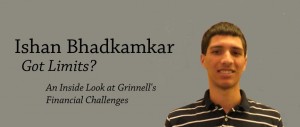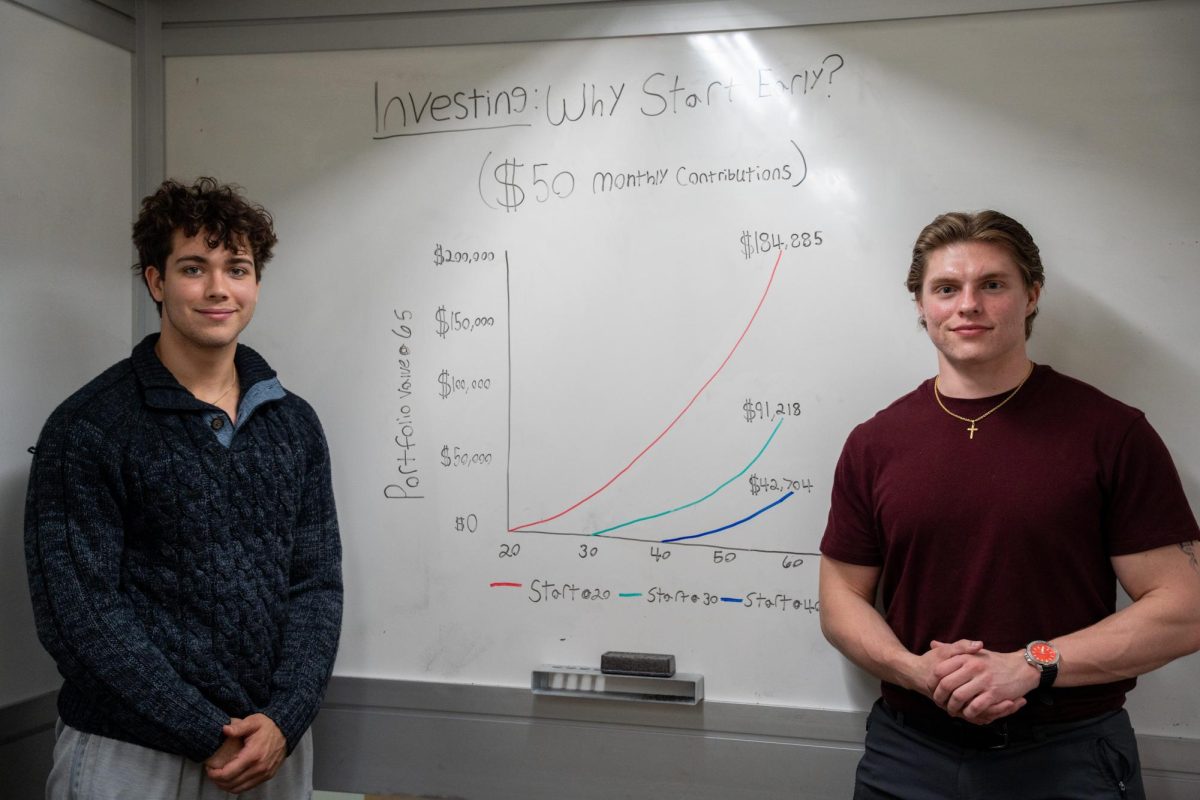
Grinnell is fortunate to have a $1.45 billion* endowment. Under the skillful stewardship of the Trustees and the Investment Office, with notable individuals such as Warren Buffett, Joe Rosenfield and current Chief Investment Officer David Clay, Grinnell’s endowment has achieved impressive growth over the past half-century. In light of the College’s recent financial difficulties, many Grinnellians have questioned why we have not raised the endowment payout (the annual contribution to the college) to support operations. But few realize there are serious tradeoffs associated with spending more of the endowment.
Grinnell’s Investment Office manages the endowment to ensure the College will have sufficient financial resources forever. The endowment should be thought of as a nest egg that exists to support Grinnell in perpetuity. Ideally, the endowment will experience growth over time, but at the very least it should provide equal resources to all generations of Grinnellians. Every year, Grinnell withdraws 4% of the 12-quarter moving average value of its endowment to fund the college. Last year, that amount was $53 million. Assuming inflation is 3%, the endowment must grow 7% annually just to maintain its real (inflation-adjusted) value. Investment returns and charitable gifts are the two ways an endowment can grow—if Grinnell raises the endowment payout without a corresponding increase in one of these areas, the College would have fewer resources available in future years. In essence, increasing the endowment payout is equivalent to benefiting present students at the expense of future ones.
“So what?” you might ask, “Grinnell can just earn higher investment returns or attract gifts to make up for the difference.” Unfortunately, this is much easier said than done. Though our endowment payout rate is 4%, it supports 53% of Grinnell’s annual budget. Most of our peer institutions have a higher payout rate but support a lower percentage of their annual budgets with endowment spending. This indicates two facts: (1) Grinnell’s endowment is less able to generate high investment returns because of liquidity concerns; (2) Grinnell is less successful than peers at attracting gifts, which affects endowment spending policy.
When an endowment supports a high percentage of a college’s budget, it is forced to maintain more liquidity (think cash or assets that can be sold quickly). These short-term investments mostly generate low returns. Generally in the investment world, higher returns require long-term, illiquid investments. Because Grinnell must ensure it has enough cash to fund operations, it cannot allocate as much of the endowment to illiquid investments (e.g. venture capital funds). Increasing the endowment payout to 5.0% would increase liquidity concerns and further reduce the potential for the endowment to generate high returns.
What about gifts? Grinnell has struggled to attract charitable gifts to its endowment. According to a Commonfund Institute study, gifts to college endowments significantly impact their long-term growth, accounting for 1.8% of annual endowment growth over 10-year periods. Every year, most of our peer institutions receive 1.8% of the value of their endowment in new gifts. Since its 2009 low of $1.08 billion, Grinnell’s endowment has paid out $145.4 million but received only $5.9 million in gifts. This represents less than 0.1% of the endowment’s current value over three years! Had Grinnell received 1.8% annually of $1.08 billion, new gifts to endowment would have totaled over $58 million.
Compare Grinnell to a hypothetical “University A” and for simplicity, assume both have endowments valued at $1 billion. Leaving aside the 12-quarter moving average calculation, assume a 4.0% payout for Grinnell and a 5.0% payout for University A. Grinnell’s endowment value is $960 million once the payout has been distributed and University A’s endowment is $950 million. Assuming 3% inflation, each endowment must be valued at $1.03 billion after a year to maintain the real payout. However, University A receives 1.8% in new gifts, growing its endowment by $18 million, while Grinnell receives 0.1% and adds only $1 million. So University A must generate $62 million in investment returns to maintain its real endowment value, but Grinnell must earn $69 million, or $7 million more. This illustrates the difference between absolute and net payout rates. Grinnell has a lower absolute rate (4.0%) but University A has a lower net payout rate (3.2%). This phenomenon holds true for the vast majority of Grinnell’s peer institutions.
Low gift levels and liquidity constraints make it difficult for the endowment to maintain and increase in value. For too long, Grinnell has postponed creating a balanced funding model and simply placed greater demands on the endowment. Using more resources now limits us from generating them for future Grinnellians. If we continue, it will be at our own peril.
—Ishan Bhadkamkar ‘13 is an intern with the Grinnell College Investment Office
* See The 2012 Grinnell College Honor Roll of Giving publication for facts and figures
-Ishan Bhadkamkar ’13



















































Asquaretail • Feb 24, 2015 at 9:28 am
During my career as a fiduciary, changes in the Uniform Principal and Income Act led us to address how much of a trust portfolio could be paid out to the income beneficiary while allowing the portfolio to keep up with and modestly exceed the rate of inflation over an extended period of time.
Based upon extensive backtesting, we found that the most one could pay out over a decades long period was 4% and that, in fact, a 4% payout led to a significant risk of ruin. This is just to put things in perspective as we are all aware of the limitations of backtesting and our work was focussed upon taxable portfolios.
I believe that Truth to Power misses the significance of the liquidity discussion. The point was that the portfolio needs to maintain a higher level of liquidity due to its payout rate. Since liquid assets by their nature have lower investment returns, this reduces the return of the portfolio. Ironically, a lower payout ratio would allow longer investment terms which would lead to a higher rate of return. Go figure. but its true
David Calvert • Feb 24, 2015 at 4:11 am
My freshman year at Grinnell, in 1971, the endowment was merely $6 million. The college was in a fairly precarious situation at that time, and I do take much comfort to see how well we have done to get to the envious position our school now occupies 44 years later. I appreciate the “gurus” who have managed that fund so successfully, and everyone who has ever written a check to Grinnell College to help us get here.
I do appreciate the article, and the maturity of Ishan Bhadkamkar and the S&B to value the long term, vital importance of careful endowment management. Make no mistake, the endowment comes up huge each year, enabling so many aspects of the high quality education Grinnell students receive, allowing us to maintain our need-blind admission policies and generous financial aid, which is really great. But as an alum who writes a check to Grinnell every year, I know that the endowment must be assiduously preserved and bolstered by a supportive Grinnell community, so that today and tomorrow’s students can get it all, and then go out and do it all!
Truth to Power • Feb 23, 2013 at 7:17 am
Please don’t smear the facts.
The 4% endowment draw is constrained by this caveat: “The College shall not allocate 100% of this distribution to the operating budget.” (see: http://www.grinnell.edu/files/downloads/Endowment%20Spending%20PolicyJune2011.pdf) So it is false to claim the it supports 53% of the operating budget. In TRUTH, less than 4% supports the 53% of the operating budget.
Also, what is this about “liquidity concerns”? Sounds like maybe the investment gurus have tied up too much of the college endowment in investments with lock-ups — that is a guru choice, but it isn’t a solid reason supporting this article’s premise
Billionaire Bob • Feb 23, 2013 at 7:10 am
Here we go again — woe the fabulous and mighty endowment that is so massively over-committed. It’s bunk!
The ratio of endowment to student is significantly out-sized compared to just about every other “peer” institution.
One part of the problem is that Clay and the budget-keepers have never been willing to consider a budget model that is based on Grinnell’s situation. If you have more dollars per student in endowment, doesn’t it make sense that you should be spending more pennies per student in your budget? Ignoring this premise makes derivative analysis of the college’s budget data suspect.
This is another puff-piece intended to impress the supervisor under whom Mr. Bhadkamkar works. It entwines fact with a policy to spin the story that support the endowment office wants you to hear — and it’s self-serving pablum.